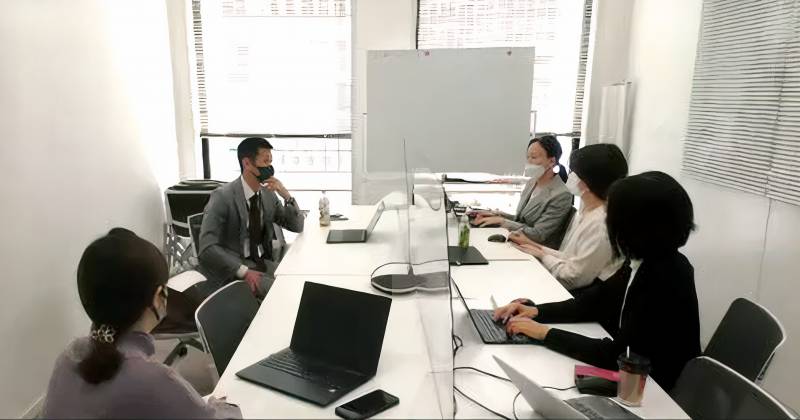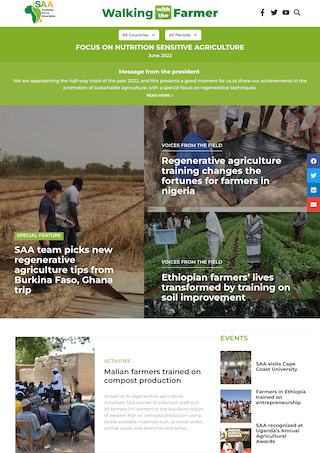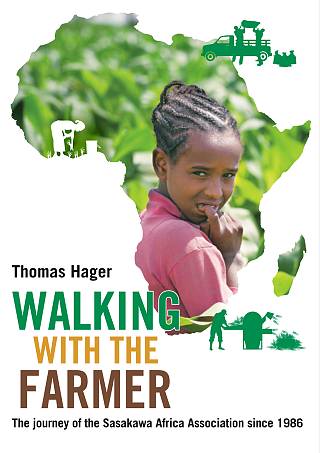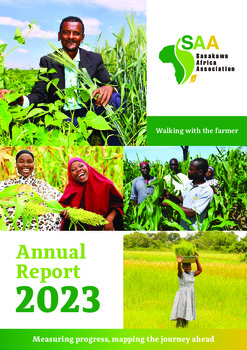【Interview】Part 3: Unveiling the Journey of Dr. Jiro Aikawa: Sharing insights with SAA projects

Dr. Aikawa and SAA Tanzania Initiative
SAA: You have had experience working on the SAA initiative in Tanzania. Could you tell us about the project you were involved in at that time?
Aikawa: I joined Sasakawa Africa Association in February 2001. Back then, SAA was operating in nine African countries. Its intervention was already underway in Tanzania, but a new project was initiated in partnership with the World Bank called the "Participatory Agricultural Development and Empowerment Project (PADEP)," where SG2000* took on the role of technical advisor. I was assigned to Tanzania as both the office director and an agricultural technology extension specialist.
For just over three years, I was actively involved in facilitating Tanzanian smallholders with access to improved seeds, fertilizer loans, and technical insights to boost maize yields and adopt crop rotation techniques, especially for legumes. Much of my understanding of legume crop rotation was influenced by the SAA Benin office director. I worked on various issues such as developing lending schemes, row planting, Training of Trainers (ToT), improved seeds and fertilizers, and the role of extension workers.
*SG2000 (Sasakawa Global 2000) - An agricultural extension program by Sasakawa Africa Association in cooperation with the Carter Center's "Global 2000" program,aimed at combating food scarcity in sub-Saharan Africa.
SAA: During your time in Tanzania, the SAA Tokyo office had a limited project role with a handful of staff, granting significant autonomy to the local offices in Africa. Contrastingly, the current Tokyo office has grown to 14 staff members, and its role has changed significantly. How do you perceive this change?
Aikawa: I believe the Tokyo headquarters should prioritize grasping local nuances and lending robust backstage support. Each country office operating in Africa brings a distinct set of strengths to the table. The Tokyo team should thoroughly comprehend each country office's strengths and areas of growth, acknowledge and assess their outcomes, and provide continuous feedback for improvement. Also, it is crucial for the Tokyo headquarters to take a backstage role to support country offices and for the local staff to approach their work with a sense of ownership. With SHEP, while initial stages are JICA-led, as activities stabilize, responsibilities should transition, ensuring local stakeholders and farmers sense their achievement. This is our core mission.
SAA's Unique Role in Agricultural Development: Disseminating universal agricultural techniques on the ground
SAA: You have witnessed SAA's evolution over the years. What do you encapsulate SAA's strengths?
Aikawa: I believe SAA's strength lies in its track record of collaborating with governments, ensuring efficient dissemination of simple and accessible improved agricultural technologies on a wide scale. SAA has consistently fostered strong ties with senior local government officials across countries, irrespective of the fluctuating dynamics with donors and governments. SAA's consistent retraining programs for agricultural extension workers, even in regions where government outreach might be limited, are commendable. It's evident that governments not only respect the educational content delivered by SAA but also trust its operational capabilities.
SAA: Do you hold specific expectations for NGOs like SAA that rely on their own funding, as opposed to receiving Official Development Assistance (ODA)?
Aikawa: NGOs with SAA’s credentials, enjoying trust from local governments and backed by strong logistical and operational capabilities, are truly unique. It's vital for SAA to stay rooted in the foundational principles set by its pioneers, primarily training agricultural extension workers. SAA should leverage its strengths, including a bold budget allocation approach, rapid decision-making, and effective execution, to identify promising simple but effective improved technologies. In my opinion, SAA's methodology might not mesh well with overly specialized or high-tech technologies. Collaborations with entities like AFAAS, an international stalwart in agricultural extension services, even if lesser-known in Japan, exemplify SAA's global stature. Japan doesn't have any other organizations of this caliber, so my message to all SAA staff would be to march ahead with confidence.
SAA: Thank you very much for sharing your valuable insights today.
Fin.
▸[Part 1] Unveiling the Journey of Dr. Jiro Aikawa: Launching SHEP Approach in Kenya
SAA Publications

E-newsletter
"Walking with the Farmer"
SAA publishes a bimonthly e-newsletter reporting on SAA activities.

SAA history book
"Walking with the Farmer: The journey of the Sasakawa Africa Assoication since 1986"
This book chronicles the history of SAA from its inception to the present.

Annual Report
Annual Report FY2023
Annual Report FY2023 is available here.




